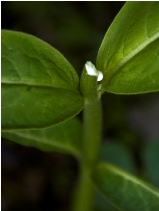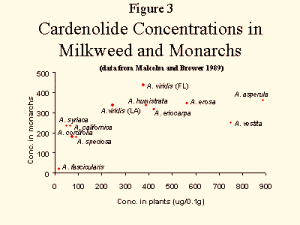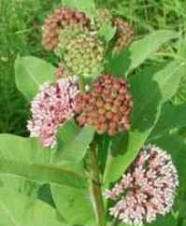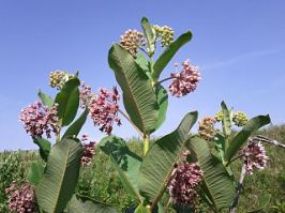Interesting facts about milkweed
Like all plants, the cell walls of Asclepias syriaca
contain mostly cellulose. Milkweed also contains a small amount of
other substances including hemicellulose, lignin, and a small
percentage of ash. Because of these properties, the fibers of the
milkweed plant have the potential of being used to manufacture paper
if the fibers undergo certain treatments. This treatment would
include first boiling the fibers, treating them with an
enzyme to enhance characteristics such as brightness, and then
bleaching the pulp. When all of these steps are completed, one is
left with a pulp that can be turned into paper products
(Spiridon, 2007). Since milkweed plants
are abundant and fast growing, it might not be a bad idea to use
them as an alternative resource for making paper products.
http://commons.wikimedia.org/wiki/File:Latex_dripping.JPG
In the past, milkweed fluff was used to stuff flotation devices for
the military during WWII. It is still used today to stuff products
such as pillows, jackets, and down comforters. Milkweed also served
Native Americans many uses; several different vegetables and
material for making ropes and twine. The white sap from the milkweed
stem also has the potential of being used to make rubber
(Thayer, 2006). Learn more about the
uses of milkweed by going to
http://www.sciencebuzz.org/.
The toxin within
You may know that some plants, like poison oak and poison ivy are poisonous because their common names give it away, but did you know milkweed is poisonous too? The white, milky sap in milkweed is what makes it toxic. This sap is found throughout the plant. Not all species of milkweed are toxic, and those that are are poisonous at different levels. Asclepias syriaca is a broad-leafed milkweed, while some other species are narrow-leafed. It is said that the narrow-leafed species are more toxic, and they also contain a different toxin than the broad-leafed species of milkweed. Asclepias syriaca produces cardenolides. As you may guess by the name, these toxins affect the heart. Many species of plants contain this toxin, and poisonings from these plants are a problem in South Asia.



http://www.flickr.com/photos/
http://commons.wikimedia.org/
http://www.monarchlab.org/Lab/
luschei/2514890012/
wiki/File:Cardenolide.png
Research/Topics/Milkweed/Default.aspx
As seen on the interactions page,
monarch butterflies feed on milkweed in all stages of life. This
toxin found in milkweed provides a defense for them because birds or
other animals often die from the toxin that exists in the butterfly
from feeding on the milkweed. Horses, sheep and cattle are also
prone to dying if they consume the toxin found in Asclepias
syriaca (University of Pennsylvania,
2002). However, the "larvae are unlikely to be killed by the low
cardenolide concentrations in A. syriaca"
(Oberhauser and Solensky, 2004). More
information about this and many other poisonous plants can be found
at the following link
http://cal.vet.upenn.edu/projects/poison/index.html.
Despite the toxins contained in milkweed, Asclepias syriaca is edible for humans. You should however not eat any of it raw because of the toxins. It was previously thought that in order to be safe to eat, one needed to boil the plant three times, but many people have eaten it without any side effects after boiling it only once. The shoots, leaves, buds or pods can be eaten and are said to be a good addition to any dish. While some species of milkweed are bitter, Asclepias syriaca is not after it gets boiled. Common milkweed is considered one of the "best tasting, easiest to harvest, and most abundant edible wild plants" (Thayer, 2006). Before trying it out, be careful when identifying which species it is; there are several look-alikes that could result in illness or even fatality, especially if a lot is consumed. Although common milkweed is an interesting plant, read about a species of carnivorous plants, the pale pitcher plant!
To learn about more poisonous and venomous creatures that you may share a habitat with, go to http://multipleorganisms.net/ and check out the Spring 2013 pages! And for more edible organisms such as passion fruit and lemongrass, click on Spring 2012.

 wikimedia
wikimedia